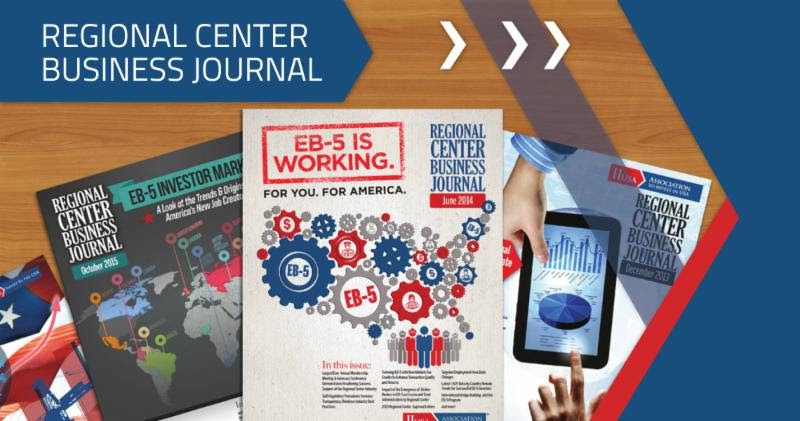 By Jor Law, Esq., Corporate/Securities Attorney, Homeier Law PC
By Jor Law, Esq., Corporate/Securities Attorney, Homeier Law PC
The “accredited investor” is central to Rule 506 of Regulation D, one of the commonly relied upon exemptions in securities laws. In the EB-5 industry, Rule 506 is one of the primary exemptions (along with Reg S) used by issuers of securities to avoid having to register their securities offering with the SEC, an expensive and lengthy process.
Current Definition
Accredited investors are investors who can supposedly fend for themselves due to their ability to sustain losses. Accredited investors may be entities or natural persons, but since the only investors in EB-5 are natural persons, this article will focus on the natural person accredited investor. Under current law, a natural person may qualify as an accredited investor by falling into one of the following three categories:
- Any director, executive officer, or general partner of the issuer of the securities being offered or sold, or any director, executive officer, or general partner of a general partner of that issuer;
- Any natural person who had an individual income in excess of $200,000 in each of the two most recent years or joint income with that person’s spouse in excess of $300,000 in each of those years and has a reasonable expectation of reaching the same income level in the current year; or
- Any natural person whose individual net worth, or joint net worth with that person’s spouse, exceeds $1,000,000, excluding the value of the primary residence.
Most EB-5 investors qualify under the income test or the net worth test.
Proposed Changes
The Dodd-Frank Wall Street Reform and Consumer Protection Act (the “Dodd-Frank Act”) directs the SEC to review the accredited investor definition every four years. The last review culminated in the SEC Staff releasing a December 18, 2015 Report on the Review of the Definition of “Accredited Investor”, where SEC staff made the following recommendations to the SEC Commission:
- Revise the financial thresholds requirements for natural persons to qualify as accredited investors by considering the following:
- Leave the current income and net worth thresholds in place, subject to investment limitations;
- Create new, additional inflation-adjusted income and net worth thresholds not subject to investment limitations;
- Index all financial thresholds for inflation on a going-forward basis; and
- Permit spousal equivalents to pool their finances for purposes of qualifying as accredited investors.
- Revise the accredited investor definition to allow individuals to qualify as accredited investors based on other measures of sophistication by considering the following:
- Permit individuals with a minimum amount of investments to qualify as accredited investors;
- Permit individuals with certain professional credentials to qualify as accredited investors;
- Permit individuals with experience investing in exempt offerings to qualify as accredited investors;
- Permit knowledgeable employees of private funds to qualify as accredited investors for investments in their employer’s funds; and
- Permit individuals who pass an accredited investor examination to qualify as accredited investors.
How it Affects EB-5
Many EB-5 securities offerings rely upon Rule 506 of Regulation D as an exemption. There are two types of Rule 506 exemptions. Rule 506(b) disallows general solicitation and advertising, but issuers may rely on investors to self-certify that they are accredited investors. They may even accept up to 35 non-accredited, but sophisticated investors, although in practice most issuers avoid accepting any non-accredited investor due to heighten compliance burdens. Rule 506(c), in contrast, allows general solicitation and advertising, but the issuer must take SEC-prescribed reasonable steps to verify that the investors are accredited investors. In both types of Rule 506, the definition of accredited investor directly impacts who may invest. In Rule 506(c), any change to the definition may have a greater impact as issuers must prove that their investors are accredited.
Keeping Thresholds Same, but Imposing Investment Limits
If the current thresholds are kept, but investment limits are imposed, the investment limits may be lower than the minimum amount that must be invested in EB-5. This would mean that unless an investor was significantly above the threshold, they may not be eligible to invest enough money to qualify for EB-5.
Raising Thresholds
If the thresholds are raised, fewer foreign investors will qualify as accredited investors, especially with a surging US Dollar. Per the SEC’s Report, the current standards adjusted for inflation would be:
Adjusting the current thresholds would more than double the current thresholds, which would dramatically diminish the number of eligible investors.
Adding Sophistication
It’s important to note that the proposed modification is to add a new category by which investors who did not qualify under other categories could qualify and not to impose sophistication standards on investors who could already qualify under other categories. This modification can only enlarge the pool of eligible investors. The primary argument in support of adding a new sophistication category is that the current definition of accredit investor focuses too heavily on financial thresholds. If the accredited investor definition is supposed to identify those who can sustain losses or fend for themselves, then the current definitions which largely ignore sophistication are lacking. A wealthy investor may be able to take on risks even if they lacked financial sophistication, but a sophisticated investor may be able to take on risks even if they lacked wealth.
Verification
As mentioned above, the proposed changes would have a greater impact on Rule 506(c) deals where issuers must take extra steps to verify that their investor qualifies as an accredited investor. Within the EB-5 industry, Rule 506(c) has been increasingly used because it allows for US Persons to invest (Reg S does not allow this) and because it allows for general solicitation and advertising (Rule 506(b) does not). Depending on what changes are ultimately adopted, this could significantly impact whether issuers choose to rely on Rule 506(b) or Rule 506(c).









